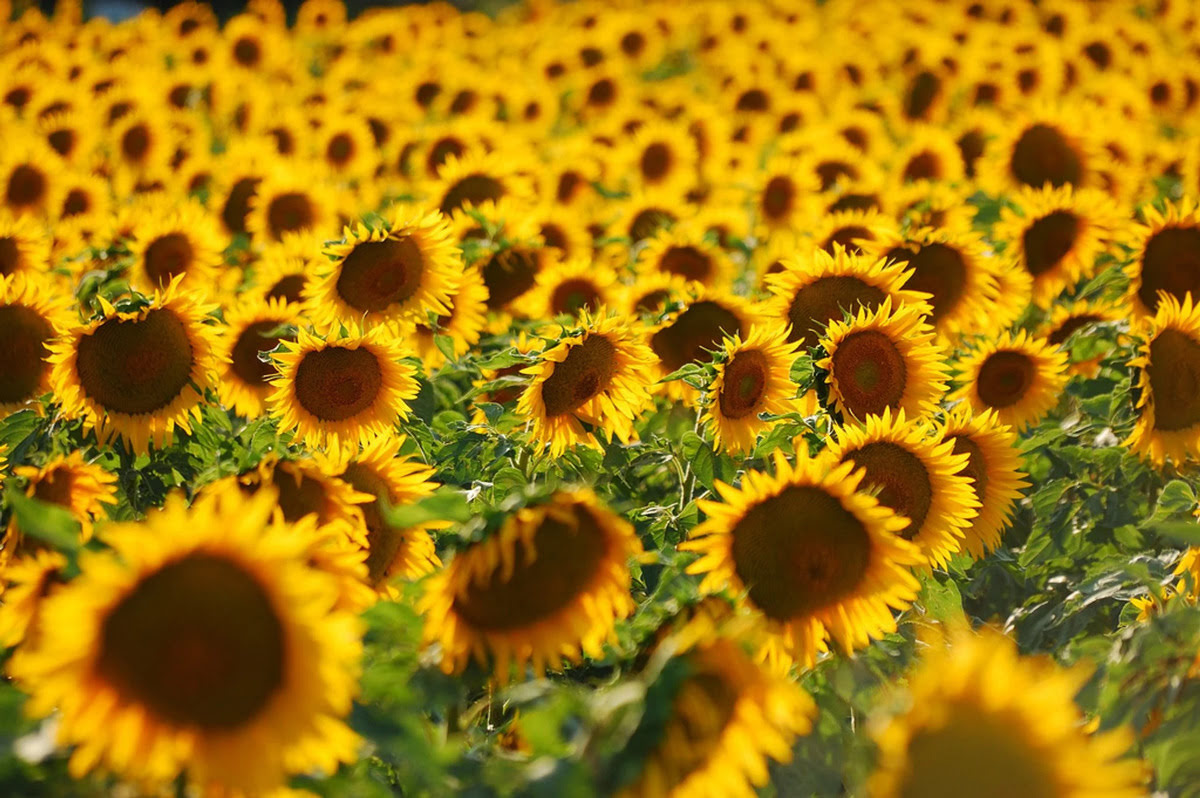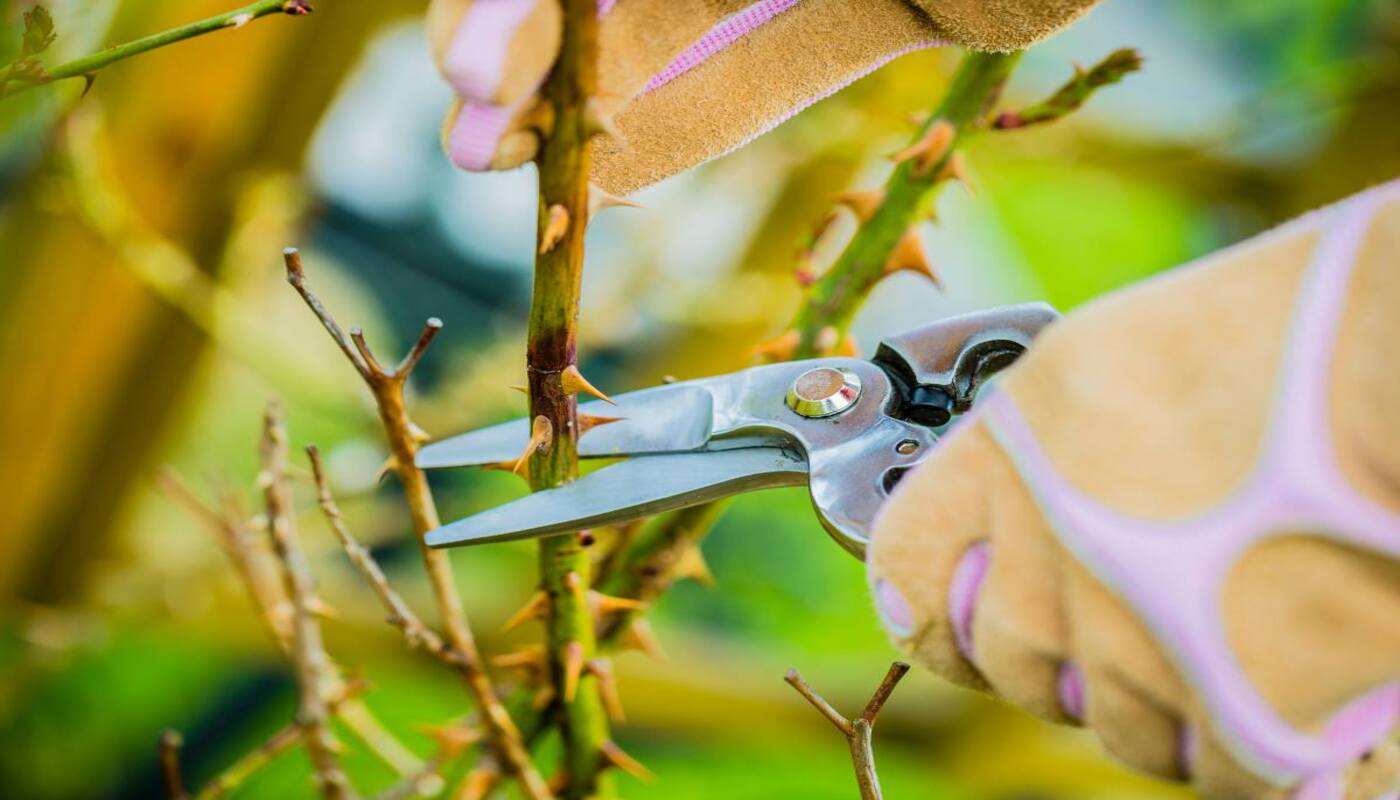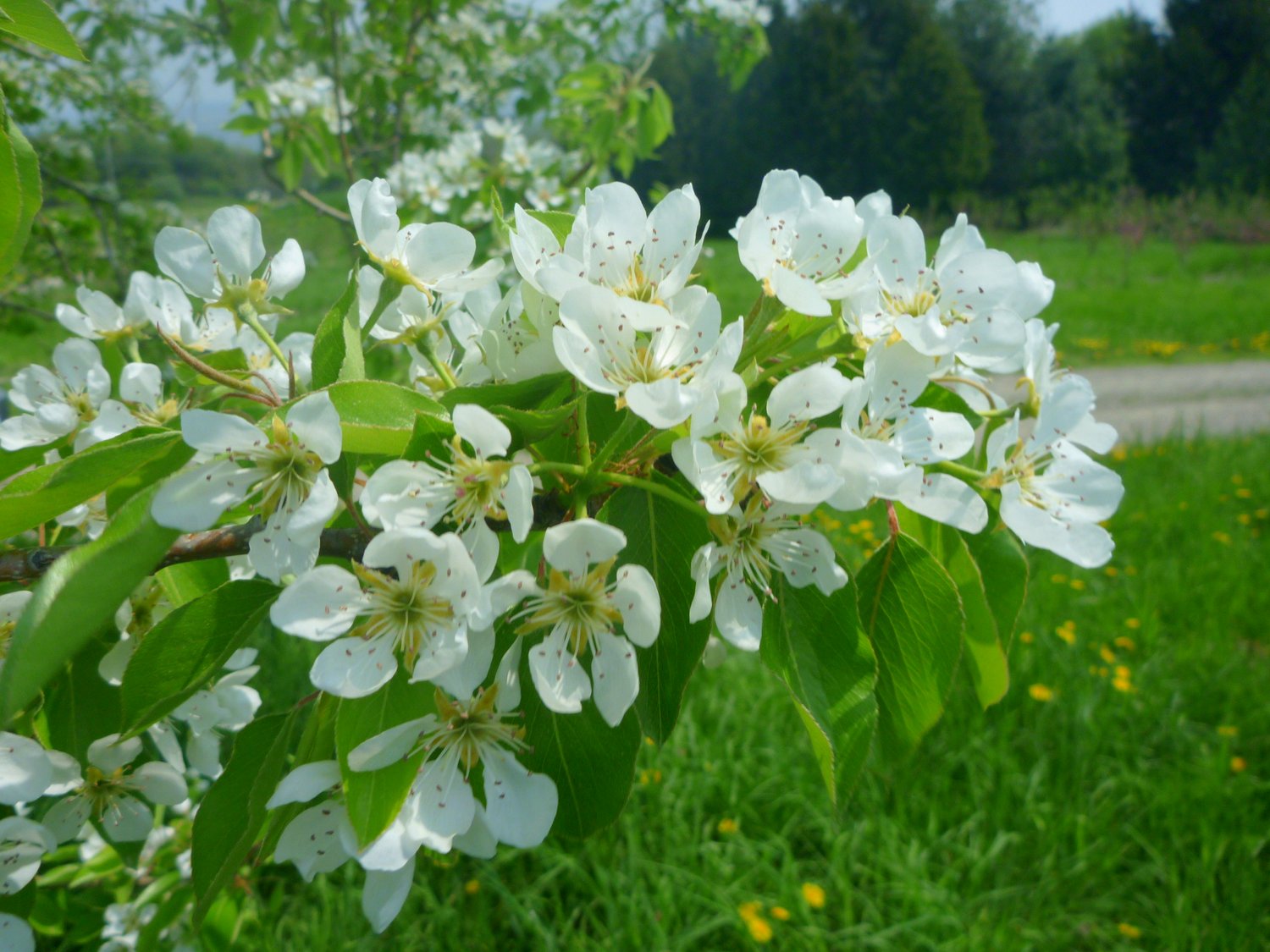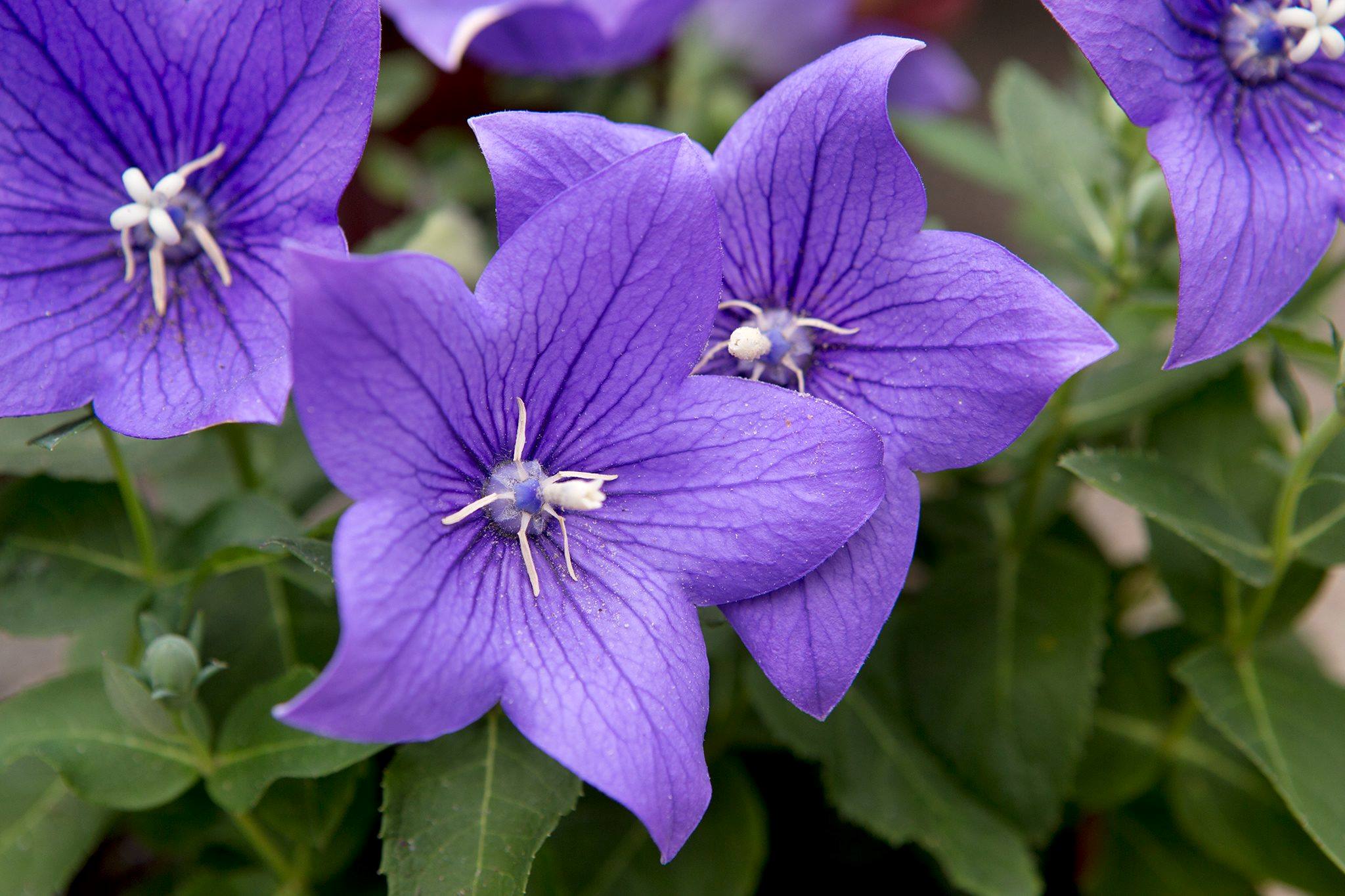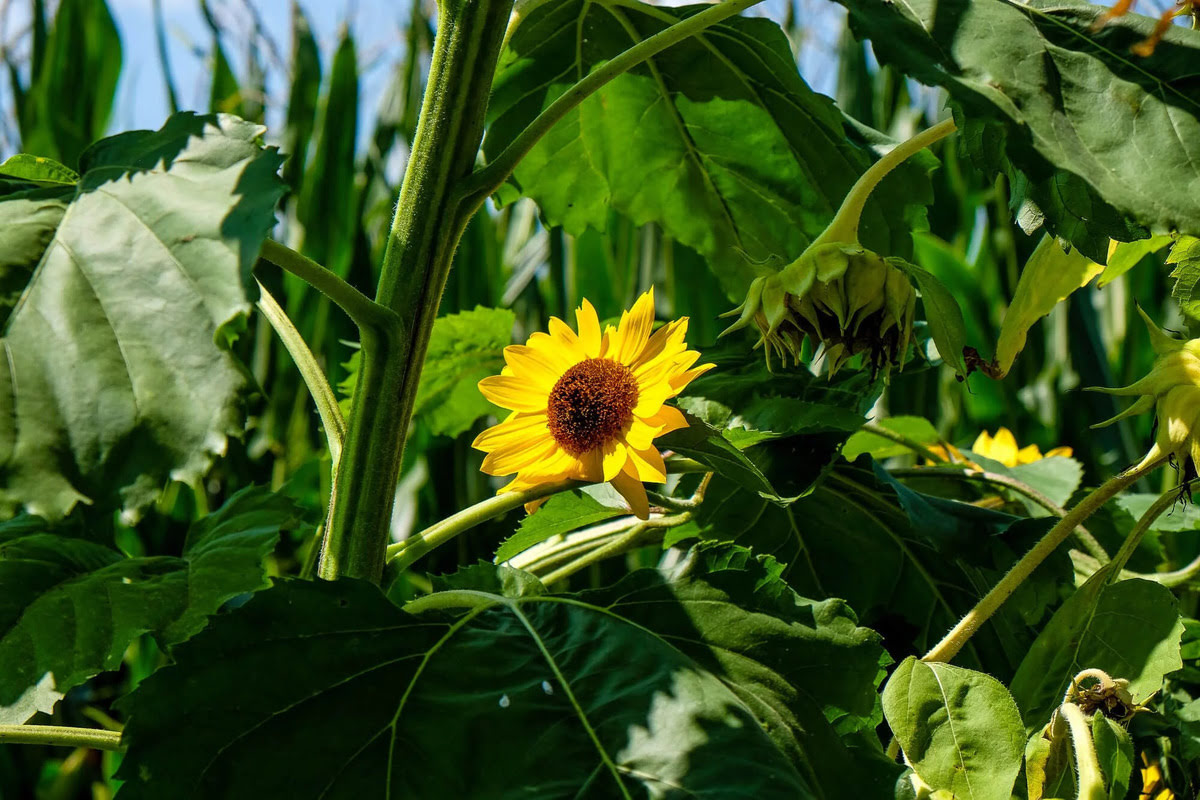Home>Types of Gardening>Ornamental Gardening>When Do Roses Stop Blooming


Ornamental Gardening
When Do Roses Stop Blooming
Modified: February 10, 2024
Learn about the blooming period of roses in your ornamental garden, and when you can expect them to stop flowering. Discover key tips for maximizing their bloom cycle.
(Many of the links in this article redirect to a specific reviewed product. Your purchase of these products through affiliate links helps to generate commission for Chicagolandgardening.com, at no extra cost. Learn more)
Table of Contents
Introduction
Roses are undoubtedly one of the most beloved flowers in the world. Their stunning blooms and intoxicating fragrance make them a prized addition to any garden or landscape. However, every rose lover knows that the beauty of these flowers is not everlasting. Eventually, even the most vibrant roses will stop blooming. But when exactly does this happen?
The blooming period of roses varies depending on several factors, such as the type of rose, climate, care practices, and season. Understanding these factors is crucial for gardeners and enthusiasts who want to prolong the blooming season of their roses and ensure the best possible display of colorful petals.
In this article, we will explore the various factors that influence the blooming period of roses and provide insights into how you can extend and maintain a longer blooming season for your beloved rose plants. By implementing the right techniques and understanding the needs of your roses, you can enjoy a vibrant and flourishing garden filled with the captivating beauty of roses.
So let’s dive into the world of rose blooming and discover the secrets to keeping your roses in full bloom as long as possible!
Factors Affecting Rose Blooming Period
The blooming period of roses is influenced by various factors that interact and contribute to the overall health and vitality of the plants. By understanding these factors, gardeners can effectively manage their roses and optimize their blooming duration. Let’s take a closer look at some of the key factors that impact the rose blooming period:
- Rose Varieties: Different rose varieties have varying blooming periods. Some roses, known as “repeat bloomers,” have a longer blooming season and will produce flowers multiple times throughout the year. Others may have a single blooming period or a shorter blooming window. It is essential to choose rose varieties that align with your desired blooming duration.
- Climate and Season: Roses thrive in specific climate conditions, and their blooming period is greatly influenced by seasonal changes. Generally, roses bloom during spring and continue into early summer. However, this can vary depending on your location and the specific climate of your region. Cooler temperatures and longer daylight hours during spring and early summer provide ideal conditions for roses to bloom.
- Pruning and Deadheading Practices: Proper pruning techniques play a significant role in the blooming period of roses. Regular pruning helps remove dead or damaged wood and encourages new growth, resulting in more blooms. Deadheading, which involves removing spent flowers, promotes continuous blooming by redirecting the plant’s energy towards new flower production.
- Fertilization and Nutrient Management: Roses are heavy feeders and require adequate nutrients to produce robust blooms. Fertilizing roses with a balanced rose food or organic matter helps promote healthy growth and vibrant blossoms. Proper nutrient management and regular fertilization are crucial for prolonging the blooming period of roses.
- Pest and Disease Control: Insect pests and diseases can significantly impact the blooming period of roses. Common pests like aphids and diseases like blackspot can affect the overall health of the plant and hinder flower production. Implementing a regular pest control and disease prevention program is essential for maintaining healthy roses that bloom abundantly.
- Proper Watering and Irrigation: Adequate watering and irrigation are vital for the blooming period of roses. Regular and consistent watering helps prevent stress and ensures the plants have enough moisture for healthy growth and flower production. Proper irrigation techniques, such as avoiding overhead watering and watering at the base of the plants, can help minimize water-related issues and optimize the blooming duration.
- Health and Care of Rose Plants: In addition to the specific factors mentioned above, overall plant health and care play a significant role in the blooming period of roses. This includes proper sunlight exposure, ensuring good air circulation around the plants, and maintaining a clean and well-mulched garden bed. Providing optimal growing conditions and proper care practices contribute to extended and abundant blooming.
By considering and managing these factors, rose enthusiasts can maximize the blooming period of their cherished plants, creating a visually stunning and captivating garden display. Taking a holistic approach to rose care and understanding the unique needs of your roses will help ensure their optimal growth and a longer blooming season.
Climate and Seasonal Changes
The climate and seasonal changes have a profound impact on the blooming period of roses. Understanding the ideal climate conditions for rose growth and monitoring seasonal changes can help gardeners anticipate and manage the blooming duration of their roses.
Generally, roses bloom during the spring and continue into early summer. The cooler temperatures and longer daylight hours of these seasons provide the perfect conditions for roses to thrive and produce abundant blooms. However, the specific blooming period can vary depending on the climate of your region and the rose varieties you have planted.
For roses to bloom optimally, they require a certain number of chill hours, which are hours of cold temperatures that the plants need to break dormancy and stimulate flowering. The specific requirement varies depending on the rose variety. This is why some roses perform better in cooler regions with more pronounced seasons, while others thrive in milder climates.
It is important to choose rose varieties that are suitable for your climate and can withstand the temperature fluctuations and seasonal changes in your area. Researching and selecting roses that are known to perform well in your specific climatic conditions will increase your chances of a longer and more successful blooming period.
In addition to temperature, sunlight is another crucial factor. Roses require a minimum of six hours of direct sunlight per day to bloom optimally. Insufficient sunlight can result in weak and sparsely blooming plants. Ensure your rose plants receive adequate sunlight by planting them in a location where they will receive the recommended hours of direct sunlight.
Moreover, seasonal changes can affect the blooming duration of roses. As the seasons progress, environmental conditions change, including temperature, humidity, and daylight hours. These changes can influence the growth and development of roses. During late spring and early summer, when temperatures rise, some rose varieties might enter a resting phase, known as “summer dormancy,” during which they may produce fewer blooms.
To support your roses throughout the changing seasons, it is crucial to adjust your care practices accordingly. Regularly monitor your roses for any signs of stress or damage caused by extreme weather conditions. Provide proper protection during cold winters or hot summers, such as mulching the base of the plants to insulate the roots or providing shade during periods of intense heat.
Understanding the climate and seasonal changes in your area, along with selecting appropriate rose varieties, will help you establish a well-adapted and resilient rose garden. By working in harmony with nature and providing the necessary care based on the specific requirements of your roses, you can optimize their blooming period and enjoy a magnificent display of flowers.
Pruning and Deadheading Techniques
Pruning and deadheading are essential techniques for maintaining the health and prolonging the blooming period of roses. By removing old or spent flowers and properly pruning the plants, gardeners can promote new growth and encourage continuous flower production.
Regular pruning helps shape the rose plant, remove dead or damaged wood, and stimulate the growth of new canes. The best time to prune roses depends on the specific rose variety and the climate in which they are grown. As a general rule, pruning should be done in late winter or early spring, before new growth emerges. However, some rose varieties may require pruning after their first flush of spring blooms to promote additional flowering later in the season.
When pruning roses, it is important to use clean and sharp tools to make precise cuts. Remove any dead, weak, or crossing branches, as these can inhibit air circulation and contribute to disease development. Aim to create an open and balanced framework for the rose plant, allowing light to reach the center and promoting better air flow. This reduces the risk of diseases and encourages abundant flower production.
Deadheading involves the removal of spent flowers before they can develop seed pods. This technique redirects the plant’s energy from seed production to new bud development, resulting in more blooms. Deadheading also improves the overall appearance of the rose plant and prevents seed dispersal, which can lead to unwanted seedlings.
To deadhead roses, prune just above a healthy outward-facing leaf bud or a five-leaflet leaf. Make the cut at a 45-degree angle, approximately ¼ inch above the bud. This ensures a clean cut and reduces the chances of disease entry. Deadheading should be done regularly throughout the blooming season, removing individual spent flowers or entire clusters, depending on the rose variety.
In addition to deadheading, removing any damaged or diseased foliage is crucial for the overall health and appearance of the rose plant. This helps prevent the spread of diseases and encourages the growth of healthy new leaves and flowers.
It is important to note that not all roses require extensive pruning. Some rose varieties, such as shrub roses or climbing roses, have different pruning requirements. Research and understand the pruning needs of each specific rose variety to ensure the best results.
By incorporating proper pruning and deadheading techniques into your rose care routine, you can promote vigorous growth, maintain a well-shaped plant, and extend the blooming period of your roses. Regular monitoring and maintenance will keep your roses in optimal condition and provide you with a continuous display of beautiful and fragrant blossoms.
Fertilization and Nutrient Requirements
Fertilization and proper nutrient management are vital for the health and blooming period of roses. Roses are heavy feeders and require a balanced and regular supply of nutrients to support their growth and flower production.
Before fertilizing roses, it is crucial to conduct a soil test to determine the nutrient levels and pH of the soil. This will help identify any deficiencies or imbalances and allow you to tailor your fertilization program accordingly. Most roses prefer slightly acidic soil with a pH range of 6 to 6.5.
Organic matter, such as compost or well-rotted manure, can be added to the soil to improve its fertility and structure. This organic matter releases essential nutrients slowly over time and helps retain moisture in the soil, which is beneficial for rose plants.
Roses require three main nutrients: nitrogen (N), phosphorus (P), and potassium (K). Nitrogen promotes healthy leaf and stem growth, phosphorus stimulates flower production and root development, and potassium enhances overall plant vigor and disease resistance.
When selecting a fertilizer for roses, opt for a balanced fertilizer specifically formulated for roses or flowering plants. Look for a fertilizer with an NPK ratio that is suitable for promoting blooming, such as 5-10-5 or 10-20-10. Apply the fertilizer according to the manufacturer’s instructions, usually in early spring before the growing season begins, and follow up with additional applications throughout the blooming season at regular intervals.
It is important not to over-fertilize roses, as this can lead to excessive foliage growth and reduced flower production. Follow the recommended application rates and adjust based on the individual needs of your roses. Slow-release fertilizers are also beneficial, as they provide a steady supply of nutrients over an extended period.
In addition to regular fertilization, it is important to provide supplemental nutrients throughout the blooming season. This can be achieved by applying a liquid or foliar fertilizer that is specifically formulated for roses. These fertilizers are quickly absorbed by the plant and can be applied directly to the foliage and root zone.
Alongside proper fertilization, maintaining proper soil moisture is essential for nutrient uptake and utilization by the rose plants. Watering deeply and regularly, especially during dry periods, ensures that the nutrients are accessible to the roots and supports healthy growth and flowering.
Monitoring the condition of your roses and observing any signs of nutrient deficiencies, such as yellowing leaves or poor flower production, is crucial for adjusting your fertilization practices. It is important to remember that each rose variety may have different nutrient requirements, so understanding the specific needs of your roses is key.
By providing the right nutrients at the right time and ensuring proper soil fertility, you can enhance the health and vigor of your rose plants, promote abundant flower production, and prolong the blooming period of your beloved roses.
Pest and Disease Control
Pests and diseases can have a detrimental effect on the blooming period and overall health of roses. It is crucial to implement an effective pest and disease control program to protect your roses and ensure their longevity and continuous flower production.
Common pests that affect roses include aphids, thrips, spider mites, and rose beetles. These pests can cause damage to foliage, buds, and flowers, leading to stunted growth and reduced blooming. Regular monitoring of your roses is essential to detect any signs of pest infestation early on.
To control pests, you can start by using natural methods such as manual removal or using a strong stream of water to dislodge aphids or spider mites from the plants. Introducing beneficial insects like ladybugs or lacewings can also help control aphid populations. If the infestation persists or becomes severe, consider using organic or chemical insecticides specifically designed for roses, following the instructions carefully to ensure safe and effective application.
Diseases can also impact the blooming period of roses. Common rose diseases include blackspot, powdery mildew, and rust. These diseases often thrive in humid and damp conditions and can weaken the rose plants, affecting their ability to produce blooms.
To prevent and control diseases, proper sanitation and cultural practices are essential. This includes removing and disposing of fallen leaves and debris promptly, as these can harbor disease pathogens over winter. Avoid overhead watering, as wet foliage provides an ideal breeding ground for diseases. Instead, water at the base of the plants to keep the foliage dry.
Applying fungicides can also help prevent or control fungal diseases. Select a fungicide suitable for roses and follow the recommended application rates and timing. Organic alternatives such as neem oil or horticultural oils can also be effective in controlling diseases and pests.
Vigilance is key when it comes to pest and disease control. Regularly inspect your roses for any signs of pests or diseases, including discoloration, spotting, or distortion of leaves, stems, or flowers. Early detection and intervention are crucial for successful control and prevention of further damage.
Incorporating good gardening practices such as proper spacing, adequate sunlight exposure, and proper air circulation can also contribute to disease prevention. Healthy and strong plants are more resilient against pests and diseases and are more likely to produce abundant blooms.
By implementing a comprehensive pest and disease control program and staying vigilant in monitoring your roses, you can significantly reduce the impact of pests and diseases, promote healthy growth, and ensure a longer blooming period for your precious roses.
Proper Watering and Irrigation
Proper watering and irrigation practices are critical for maintaining the health and blooming period of roses. Water is essential for facilitating nutrient uptake, maintaining turgidity in plant cells, and supporting overall plant growth and flower production.
One common mistake in watering roses is shallow and frequent watering. This practice can lead to shallow root growth and weak plants. Instead, it is important to water deeply and infrequently. This allows the roots to establish deeper in the soil, making them better equipped to access moisture during periods of dryness.
When watering roses, aim to wet the root zone thoroughly. This is typically achieved by providing enough water to penetrate at least 6-8 inches into the soil. Applying water directly to the base of the plant helps minimize water loss through evaporation and ensures the roots receive the moisture they need.
Timing is also important when it comes to watering roses. Watering in the early morning or late evening allows the plants to absorb moisture before the heat of the day evaporates it. Avoid watering during the hottest part of the day, as this can lead to water stress on the plants and increase the risk of disease development.
While roses require consistent moisture for healthy growth and blooming, overwatering can be detrimental. It can lead to waterlogged soil, which suffocates the roots and increases the risk of root rot and other diseases. To avoid overwatering, monitor the soil moisture level by checking the top few inches of soil. Water only when the soil feels dry to the touch.
In addition to regular watering, mulching around the base of the rose plants can help retain soil moisture and reduce weed growth. Apply a layer of organic mulch, such as wood chips or straw, to conserve moisture and protect the roots from extreme temperatures.
Proper irrigation systems, such as drip irrigation or soaker hoses, can also be beneficial for roses. These systems deliver water directly to the root zone, minimizing water waste and ensuring efficient water distribution. They also help prevent water from splashing onto the foliage, which can contribute to disease development.
While providing adequate moisture is crucial, it is equally important to avoid water stress on the plants. During periods of prolonged drought or hot weather, roses may require supplemental irrigation to prevent wilting and stress. Monitor weather conditions and adjust your watering schedule accordingly to ensure your roses receive the necessary moisture.
By practicing proper watering and irrigation techniques, you can ensure that your roses stay hydrated, maintain healthy growth, and produce abundant blooms. Consistent moisture, provided in the right amounts and at the right times, will contribute to the overall health and longevity of your roses’ blooming period.
Health and Care of Rose Plants
Maintaining the health and care of rose plants is crucial for prolonging their blooming period and ensuring their overall well-being. By providing the right conditions, nutrients, and care, you can enjoy a garden filled with vibrant and beautiful roses.
Sunlight is essential for the growth and flowering of roses. Most rose varieties require a minimum of six hours of direct sunlight per day. Position your roses in a location that receives adequate sunlight to ensure optimal growth and abundant blooms. However, be mindful of intense afternoon sun, especially in hot climates, as it can cause heat stress or scorch the leaves and petals.
A well-drained soil is essential for rose plants. If your soil is heavy, dense, or clay-based, consider amending it with organic matter such as compost or well-rotted manure. This improves drainage, enhances soil texture, and provides essential nutrients to the plants.
Regularly monitoring the moisture levels of the soil is important. Roses prefer consistently moist soil but not waterlogged conditions. Water deeply and infrequently, ensuring the water reaches the root zone. Avoid overhead watering, as wet foliage can promote disease development.
Proper pruning plays a crucial role in rose health and blooming. Prune roses during late winter or early spring, before new growth emerges. Remove dead, damaged, or crossing branches to improve air circulation and prevent disease. Pruning also encourages new growth and promotes the production of more flowers.
Feeding roses with a balanced fertilizer formulated for flowering plants is essential for their health and blooming. Follow the recommended application rates and timing for your specific rose variety. Apply fertilizer in early spring, before the growing season, and continue throughout the blooming period to support continuous flower production.
Regularly monitor your roses for signs of diseases or pests. Common rose diseases include blackspot, powdery mildew, and rust. Proper sanitation, such as removing fallen leaves and debris promptly, can help prevent disease spread. Monitor for pests such as aphids or spider mites, and take appropriate measures to control infestations.
Avoid overcrowding plants, as it can lead to poor air circulation and increased disease susceptibility. Space your roses adequately, providing enough room for each plant to grow and receive sufficient sunlight and air movement. Well-spaced plants also make maintenance tasks such as pruning and deadheading easier.
Regularly monitor for signs of nutrient deficiencies, such as yellowing leaves or stunted growth. Adjust your fertilization practices accordingly to ensure your roses receive the necessary nutrients. Organic matter, such as compost or well-rotted manure, can also be added to the soil to provide additional nutrients and improve overall soil health.
Finally, regular observation and care are key to maintaining the health of your rose plants. Remove any dead or damaged wood, spent flowers, or diseased foliage promptly. Pay attention to your roses’ specific needs and adjust your care practices accordingly. By providing proper care, you can enjoy healthy, robust roses that bloom abundantly.
Conclusion
Ornamental gardening enthusiasts understand the joy and satisfaction of cultivating beautiful roses. To ensure a long blooming period and optimal health for your rose plants, it is crucial to consider various factors such as climate, pruning, fertilization, pest and disease control, and proper watering techniques.
Understanding the specific needs of your rose varieties, selecting appropriate planting locations, and following proper care practices contribute to the success of your rose garden. By choosing rose varieties that are well-suited to your climate and implementing proper pruning techniques, you can promote vigorous growth and continuous flower production.
The proper application of fertilizers and organic matter, combined with regular monitoring of nutrient levels, plays a significant role in the health and blooming of roses. Effective pest and disease control measures, paired with good sanitation practices, mitigate potential risks to the overall health and vitality of the plants.
Watering roses appropriately, providing regular deep irrigation while avoiding overwatering, helps maintain moisture levels and prevents root stress. Additionally, ensuring optimal sunlight exposure, choosing well-draining soil, and incorporating proper air circulation practices help bolster the health and endurance of your roses.
Maintaining the health and care of rose plants requires attentiveness, observation, and ongoing maintenance. Regular pruning, deadheading, and removing any dead or damaged wood and foliage promote better air circulation and prevent disease occurrence.
By considering these essential aspects of rose care and implementing the right practices, gardeners and enthusiasts can extend the blooming period of their beloved roses, creating a stunning display of colors and fragrances year after year.
So go ahead, tend to your rose garden with care and dedication, and enjoy the rewarding experience of watching your roses thrive, bloom, and bring beauty to your landscape.


